Do you have a question about the Milwaukee Hammer Drill and is the answer not in the manual?
Maintain a clean, well-lit, and safe work area, keeping bystanders away.
Proper handling of cords and battery packs to prevent fire and shock hazards.
Stay alert, dress appropriately, avoid accidental starting, and use safety equipment.
Use clamps, avoid forcing, ensure switch functionality, and disconnect power.
Store tools safely, keep batteries away from metal, and maintain sharp edges.
Tool service must be performed by qualified personnel to avoid injury risks.
Use identical replacement parts to prevent shock or injury during servicing.
Maintain labels and be aware of chemical dust hazards from construction activities.
Handle tools by insulated grips, keep hands clear of moving parts, wear ear protection.
Understand tool symbols and review technical specifications for models.
Identify and understand the function of each part of the tool.
Review the capacities for drilling different materials and driving screws.
Learn how to properly insert and remove battery packs for optimal use.
Instructions for installing and removing the side handle for better control.
How to open, close, and remove bits using the keyless chuck.
Adjust the clutch for proper torque when driving screws.
Use the speed selector for low (up to 500 RPM) and high (up to 1700 RPM) speeds.
Engage hammer action for masonry by rotating the torque collar.
Select drill-only mode by aligning the drill symbol with the arrow.
Operate the control switch for forward, reverse rotation, or to lock the trigger.
Apply firm pressure for drilling, reduce if stalling, reverse if bit binds.
Use appropriate bits and speeds; clear chips and back work with scrap wood.
Use high-speed bits, center punch, lubricate, and back material to prevent binding.
Use hammer-drill mode and carbide bits; adjust pressure based on material hardness.
Drill pilot holes, set torque, use correct bits, and apply firm pressure.
Use sharp bits, proper bits, and caution with difficult materials to prevent binding.
Use proper bracing techniques to handle high rotational forces safely.
Regular maintenance checks for lubrication, inspection, and electrical testing.
Clean tools and chargers with mild soap and water; avoid solvents.
Recycle Ni-Cd battery packs and follow disposal regulations.
Information on the limited warranty for tools and battery packs.
Return tools for repair to authorized service centers; warranty covers defects.
Details on 1/2" keyless chucks and hammer-drill accessory kits.
Information on plastic carrying cases and replacement side handles.
Maintain a clean, well-lit, and safe work area, keeping bystanders away.
Proper handling of cords and battery packs to prevent fire and shock hazards.
Stay alert, dress appropriately, avoid accidental starting, and use safety equipment.
Use clamps, avoid forcing, ensure switch functionality, and disconnect power.
Store tools safely, keep batteries away from metal, and maintain sharp edges.
Tool service must be performed by qualified personnel to avoid injury risks.
Use identical replacement parts to prevent shock or injury during servicing.
Maintain labels and be aware of chemical dust hazards from construction activities.
Handle tools by insulated grips, keep hands clear of moving parts, wear ear protection.
Understand tool symbols and review technical specifications for models.
Identify and understand the function of each part of the tool.
Review the capacities for drilling different materials and driving screws.
Learn how to properly insert and remove battery packs for optimal use.
Instructions for installing and removing the side handle for better control.
How to open, close, and remove bits using the keyless chuck.
Adjust the clutch for proper torque when driving screws.
Use the speed selector for low (up to 500 RPM) and high (up to 1700 RPM) speeds.
Engage hammer action for masonry by rotating the torque collar.
Select drill-only mode by aligning the drill symbol with the arrow.
Operate the control switch for forward, reverse rotation, or to lock the trigger.
Apply firm pressure for drilling, reduce if stalling, reverse if bit binds.
Use appropriate bits and speeds; clear chips and back work with scrap wood.
Use high-speed bits, center punch, lubricate, and back material to prevent binding.
Use hammer-drill mode and carbide bits; adjust pressure based on material hardness.
Drill pilot holes, set torque, use correct bits, and apply firm pressure.
Use sharp bits, proper bits, and caution with difficult materials to prevent binding.
Use proper bracing techniques to handle high rotational forces safely.
Regular maintenance checks for lubrication, inspection, and electrical testing.
Clean tools and chargers with mild soap and water; avoid solvents.
Recycle Ni-Cd battery packs and follow disposal regulations.
Information on the limited warranty for tools and battery packs.
Return tools for repair to authorized service centers; warranty covers defects.
Details on 1/2" keyless chucks and hammer-drill accessory kits.
Information on plastic carrying cases and replacement side handles.
| Brand | Milwaukee |
|---|---|
| Type | Hammer Drill |
| Chuck Size | 1/2 Inch |
| Voltage | 18V |
| Battery Type | Lithium-Ion (Li-Ion) |
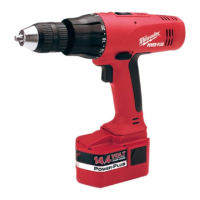

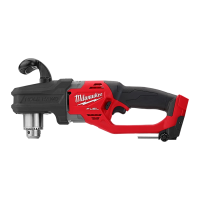

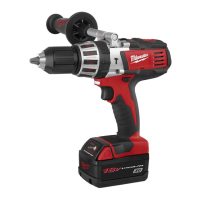
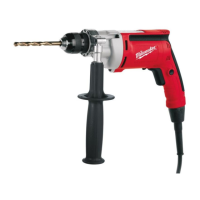
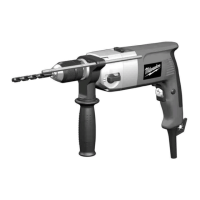

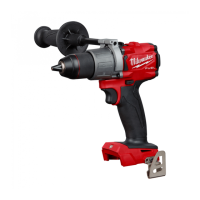
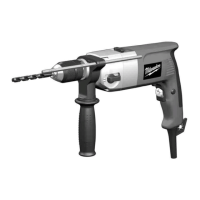

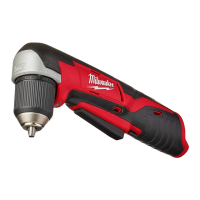
